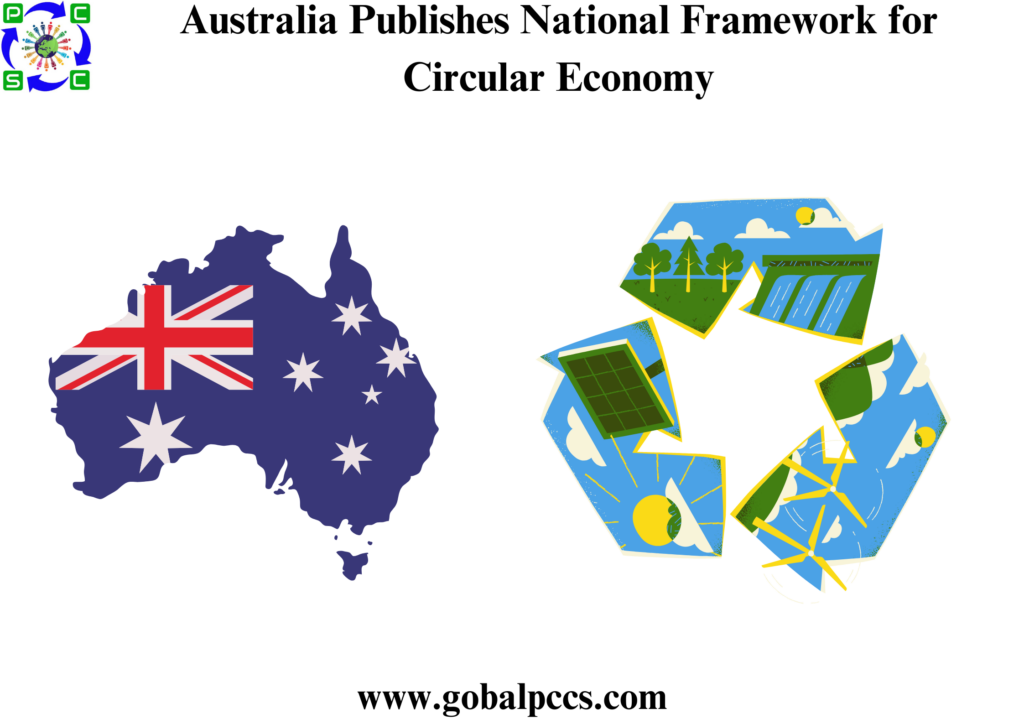 On December 10, 2024, the Australian Department of Climate Change, Energy, Environment and Water (DCCEEW) published “Australia’s Circular Economy Framework.” The framework sets an ambitious goal of doubling Australia’s circularity by 2035, establishing targets to achieve this including “reducing material footprint per capita by 10%,” “improving material productivity by 30%,” and “achieving an 80% resource recovery rate.” The framework identifies four key sectors as essential for achieving these goals: industry, built environment, agriculture and food, and resources. These sectors use large quantities of raw materials and have a significant impact on Australia’s overall circularity. The framework provides businesses with clear guidelines and priorities to reach the goals, and initiatives for waste reduction, while also emphasizing opportunities for innovation promotion, new market acquisition, and business operation organization.
On December 10, 2024, the Australian Department of Climate Change, Energy, Environment and Water (DCCEEW) published “Australia’s Circular Economy Framework.” The framework sets an ambitious goal of doubling Australia’s circularity by 2035, establishing targets to achieve this including “reducing material footprint per capita by 10%,” “improving material productivity by 30%,” and “achieving an 80% resource recovery rate.” The framework identifies four key sectors as essential for achieving these goals: industry, built environment, agriculture and food, and resources. These sectors use large quantities of raw materials and have a significant impact on Australia’s overall circularity. The framework provides businesses with clear guidelines and priorities to reach the goals, and initiatives for waste reduction, while also emphasizing opportunities for innovation promotion, new market acquisition, and business operation organization.
According to the framework, a circular economy is based on three principles:
(1) promoting product design that eliminates waste and pollution,
(2) keeping products and materials at their highest value while in use, and
(3) protecting natural resources and regenerating nature.
The framework’s goals and actions required by businesses are as follows:
Three Goals to Double Australia’s Circularity
Double Australia’s circularity by 2035, targeting resource reuse and regeneration across the entire product lifecycle from design to extraction to reuse. To achieve this, three goals have been set:
1. Reduce Material Footprint by 10%
Material footprint refers to the amount of raw materials used to produce products and services consumed in Australia. On a per capita basis, Australia has the highest material footprint among G20 countries (31 tonnes per capita in 2023). Material footprint is also a major factor in greenhouse gas (GHG) emissions. To reduce Australia’s material footprint, strategies are needed primarily to improve product design and material selection in the built environment, and in manufacturing, to use more durable recycled materials.
2. Improve Material Productivity by 30%
“Material productivity” measures the efficiency of material use (metals, minerals, biomass, etc.) in production processes. High material productivity means the economy produces more output with equal or less material input, reducing material waste and environmental impact. In 2019, Australia had the fourth-lowest material productivity among OECD countries. As of 2023, Australia generates just $1.20 USD of output per kilogram of materials consumed, well below the OECD average of $2.50 USD. Improving material productivity requires expanding advanced manufacturing and innovation in Australia and greater collaboration across global supply chains. Reusing recycled materials domestically in Australia also contributes to higher material productivity.
3. Achieve an 80% Resource Recovery Rate
Australia’s resource recovery rate is approximately 63%. Australian businesses spend $1.4 billion annually sending $26.5 billion worth of materials to landfills. Recovering, recycling, and reusing these resources creates economic value and jobs while forming the foundation of a circular economy. It also strengthens the resilience of local supply chains. To improve resource recovery rates, products need to be designed for easy recovery after their useful life, particularly in upstream economic sectors. This includes identifying and removing hazardous chemicals that prevent safe recycling and reuse.
The framework also presents two strategies for developing Australia’s circular economy. Australia’s goals reflect these strategies:
- In order to increase circularity potential, focus on investment in renewable energy, infrastructure, and active mobility, and particularly on efforts to reduce the use of non-recyclable materials.
- To achieve circularity, improve resource productivity and ensure materials are recovered after their first life and reintroduced into economic processes.
Actions Required by Businesses
Realizing a circular economy requires different types of action from government, industry groups, investors, and communities. Businesses in particular are at the forefront of driving innovation in the circular economy and are positioned to reduce waste, rethink product design for durability and repair, and reimagine product processes to enable reuse and recycling.
- Strategy, Planning, and Reporting: Businesses can support the transition to a circular economy by incorporating circular economy principles into their business models, setting clear targets, and creating actionable implementation plans.
- Product Redesign: Businesses need to incorporate circular economy principles from the product design stage. This means creating products that are easy to repair and use materials that can be reused, recycled, or biodegraded.
- Collaboration and Partnership: Transitioning to a circular economy requires businesses to cooperate across the entire supply chain with suppliers, manufacturers, and recyclers. This enables building circular solutions and sharing risks.
- Investment in New Business Models: Businesses can extract value through circular business models such as sharing and product-as-a-service. These models help extend product life and reduce the need for virgin materials, while also providing cost-effective alternatives to customers.
- Use of Circularity Metrics: Metrics such as “Circular Transition Indicators” and “CIRCelligence” can be used to evaluate business circularity and progress toward improved circularity.
Priority Measures in the Industrial Sector
The framework presents the following three points as enablers in the “industrial” sector:
Circular Product Design
Design priorities include durability, reusability, modularity, upgradeability, ease of repair, and reducing the use of chemicals of concern in products. Economic zones such as the EU, China, Japan, and Korea are developing standards and frameworks to improve product environmental performance, and alignment with these standards is important for maintaining competitiveness in these markets.
Verification of Recycled Material Origin, Characteristics, and Performance
To promote the use of recycled materials, establish consistent and verifiable standards and regulations for the classification and processing of recycled materials. In Australia, the “National Framework for Recycled Content Traceability“ has been established.
Green Chemistry and Advanced Technology
The use of chemicals of concern in products poses significant challenges to recycling processes and risks harmful emissions and residues in recycled products. Therefore, regulations and policies are needed to support substitution with safer chemicals. High-efficiency detection technologies that can identify and remove chemicals of concern in real-time will also be needed in the future.
Stay ahead in the world of sustainability compliance with Global PCCS, where expert insights meet the latest regulations. Unlock a future where compliance drives sustainability and your business thrives in a greener, regulated landscape.








 Authorised IMDS & CDX Training & Consulting partner for
Authorised IMDS & CDX Training & Consulting partner for






